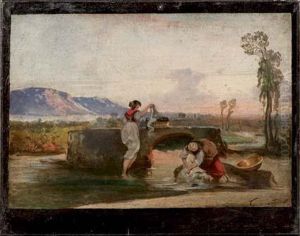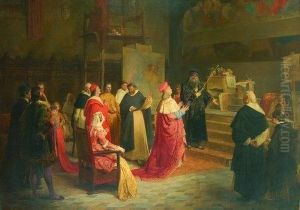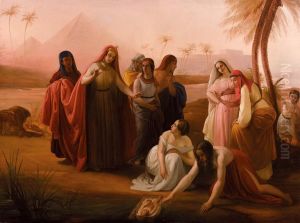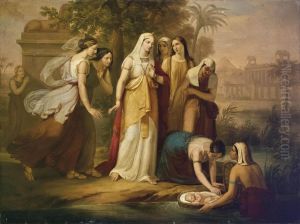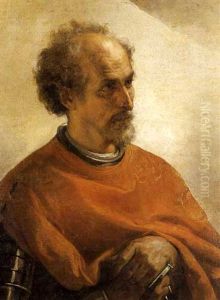Cherubino Cornienti Paintings
Cherubino Cornienti was an Italian painter and art critic, born in 1816 in Pavia, Lombardy, a region rich in artistic and cultural heritage. His career unfolded during a period of significant transformation in Italian art, marked by the Romantic movement and the nascent stirrings of Realism. Cornienti's work, though not as widely recognized today as some of his contemporaries, provides a fascinating glimpse into the artistic transitions of his time. Initially trained in the neoclassical traditions that dominated early 19th-century Italian art, Cornienti's style evolved as he became increasingly influenced by the Romantic movement, which emphasized emotion, individualism, and the sublime beauty of nature.
Cornienti's artistic education began at the Brera Academy in Milan, where he studied under prominent artists of the day. His early works were characterized by their adherence to neoclassical principles, focusing on historical and mythological themes rendered with precise detail and clarity. However, as his career progressed, Cornienti's interests and style shifted towards more contemporary subjects and a freer, more expressive use of brushwork. This transition reflected broader changes in the art world, as artists sought to capture the immediacy of their surroundings and the nuances of human emotion, moving away from the idealized forms of neoclassicism.
Despite his talents, Cornienti never achieved the level of fame enjoyed by some of his peers. Nevertheless, his contributions to Italian art were significant, particularly in his role as an art critic and teacher. Cornienti was keenly interested in the theoretical underpinnings of art and wrote extensively on aesthetics, art history, and the role of the artist in society. His writings, which were published in various contemporary journals, contributed to the intellectual discourse surrounding art in Italy during the mid-19th century.
Cornienti's later works are noted for their atmospheric qualities and emotional depth, qualities that align him with the Romantic movement, even as he maintained a distinct personal style. His landscapes and scenes of daily life in Lombardy capture the beauty and transient moods of his native region with sensitivity and a nuanced palette. Unfortunately, Cornienti's career was cut short by his untimely death in 1860, at the age of 44. Today, his works are held in several Italian museums, where they continue to be appreciated for their contribution to the transitional period of Italian art between neoclassicism and realism. Cornienti's legacy is that of an artist who bridged two major artistic movements, capturing the spirit of his time through both his paintings and his writings on art.
